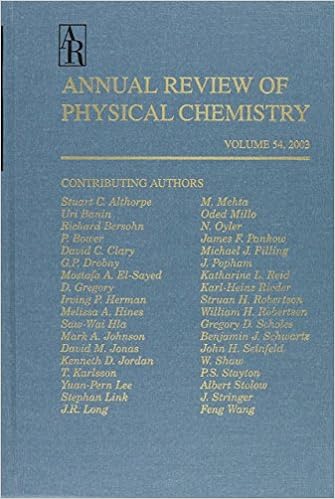A free radical.
IF 11.7
1区 化学
Q1 CHEMISTRY, PHYSICAL
引用次数: 122
Abstract
This chapter describes my research career, spanning the period from 1955 to 2000. My initial PhD work at the University of Southampton was concerned with the electronic structure and spectra of transition metal complexes and included studies of the electronic spin resonance (ESR) spectra of magnetically dilute single crystals. After a year at the University of Minnesota, I went to Cambridge University and for the next six years studied the ESR spectra of liquid phase organic free radicals. I commenced work on the microwave magnetic resonance (MMR) spectra of gaseous free radicals in 1965, and this work continued until 1975. I moved from Cambridge to Southampton in 1967. In 1975 I turned to the study of gas phase molecular ions, using ion beam methods. In the earlier years of this period I concentrated on simple fundamental species like H(+)2, HD(+), and H(+)3. In the later years until my retirement in 1999, I concentrated on the observation and analysis of microwave spectra involving energy levels lying very close to a dissociation asymptote. DEDICATION This chapter is dedicated to the memory of Harry E. Radford, who died while it was being written. Harry was a quiet and shy man, who often worked alone and never indulged in self-promotion. So far as I know, he was never awarded any medals or prizes, nor elected to any academies or learned societies. Nevertheless he was an experimentalist of the highest originality and quality, a theorist of true intellectual depth, and a remarkable pioneer in many of the techniques of studying free radicals that are now commonplace.一个自由基。
这一章描述了我从1955年到2000年的研究生涯。我最初在南安普顿大学的博士工作是关于过渡金属配合物的电子结构和光谱,包括磁稀释单晶的电子自旋共振(ESR)光谱的研究。在明尼苏达大学待了一年之后,我去了剑桥大学,在接下来的六年里,我研究了液相有机自由基的ESR光谱。我于1965年开始研究气态自由基的微波磁共振(MMR)光谱,这项工作一直持续到1975年。1967年我从剑桥搬到南安普敦。1975年,我转向气相分子离子的研究,使用离子束方法。在这一时期的早期,我专注于简单的基本物种,如H(+)2、HD(+)和H(+)3。在我1999年退休之前的几年里,我专注于观察和分析微波光谱,涉及非常接近解离渐近线的能级。这一章是为了纪念哈利·e·雷德福,他在写这一章的时候去世了。哈里是一个安静害羞的人,他经常独自工作,从不沉迷于自我推销。据我所知,他从未被授予任何奖章或奖品,也没有被选入任何学院或学术团体。然而,他是一位极具独创性和品质的实验家,一位真正具有知识深度的理论家,在许多研究自由基的技术方面是一位杰出的先驱,这些技术现在已经司空见惯。
本文章由计算机程序翻译,如有差异,请以英文原文为准。
求助全文
约1分钟内获得全文
求助全文
来源期刊
CiteScore
28.00
自引率
0.00%
发文量
21
期刊介绍:
The Annual Review of Physical Chemistry has been published since 1950 and is a comprehensive resource for significant advancements in the field. It encompasses various sub-disciplines such as biophysical chemistry, chemical kinetics, colloids, electrochemistry, geochemistry and cosmochemistry, chemistry of the atmosphere and climate, laser chemistry and ultrafast processes, the liquid state, magnetic resonance, physical organic chemistry, polymers and macromolecules, and others.

 求助内容:
求助内容: 应助结果提醒方式:
应助结果提醒方式:


